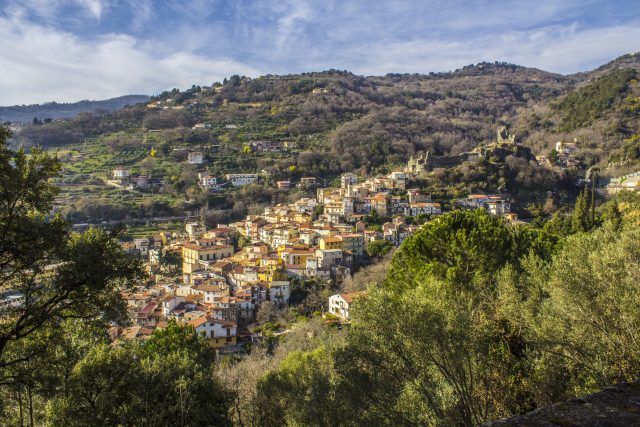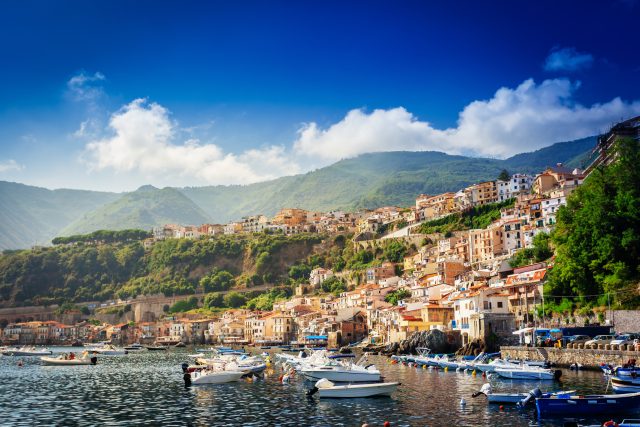This website uses cookies so that we can provide you with the best user experience possible. Cookie information is stored in your browser and performs functions such as recognising you when you return to our website and helping our team to understand which sections of the website you find most interesting and useful.
Could Prosecco have competition from Calabrian fizz?
Beyond Prosecco, other pockets of Italy produce scene-stealing sparkling wines, too – including Calabria.

Dubbed “Enotria” by the ancient Greeks, Calabria perches between the Ionian and Tyrrhenian seas in southern Italy, and offers a surprise for sparkling wine fans.
“Although Calabria is the southernmost region of Italy, which would suggest temperatures unsuitable for the production of sparkling wines,” says Gennaro Convertini, director of Consorzio Terre di Cosenza DOP (Protected Designation of Origin), “The presence of mountain territories (Pollino, Sila, Aspromonte), which reach altitudes of up to 2000m (6562 ft) above sea level, makes some terrains particularly suitable for the preservation of good levels of acidity in the grapes.”
Those cooler temperatures impact flavour and aromas, too, and are “necessary for the organoleptic balance of sparkling wines,” adds Convertini, as well as “the development of aromas, which ripen in non-oxidative temperature conditions. ”
Other Calabrian winemakers concur. “The proximity to the Ionian Sea, and the position at 500m (1,649 ft) above sea level on Mount Pollino means there is a strong diurnal range between day and night (in some periods as much as 10 degrees),” says Stefano Coppola, oenologist for wine producer Tenute Ferrocinto in Castrovillari, on Mount Polino.
“This helps to develops aromatic notes and acidity [in the sparkling wine] that are uncommon in other southern Italian regions.”
Tenute Ferrocinto introduced its first Calabrian sparkling wines in 2010, following two years of analysing temperatures and rainfall at their estate vineyard on Mount Pollino.
Enthusiastic market response to their 100% Aglianico metodo classico ‘Dovi’ rosato brut “pushed us to continue,” says Coppola, “While remaining in niche production to maintain the artisanal character of our ‘Dovi’ sparkling wine.”

Metodo Madness
Many Calabrian winemakers employ ‘metodo classico,’ also known as classic, traditional or Champagne method, which completes secondary fermentation in bottle.
This differs from Prosecco’s specially designed, closed steel tanks called autoclaves that are used during secondary fermentation, developed specifically to showcase Glera’s fresh aromas and flavours.
Like Prosecco, Calabria initially chose just one grape for its sparkling wine – Chardonnay.
Unfortunately, the Chardonnay-based fizz failed to capture market interest. In response, winemakers turned to local grapes like Gaglioppo, Magliocco, and Aglianco for making sparkling wine.
“Gradually, the choice of native vines, the discovery of the most suitable territories (at altitudes above 600m (1967 ft), and the improvement of production techniques (both in the vineyard, and in the cellar during the vinification and sparkling winemaking phase) have allowed the production of original sparkling wines, and better quality,” says Convertini.
“These have convinced the consumer that Calabrian sparkling wine can express the territories in a different way, compared to the classic areas more known for sparkling wine production. So today, the market is more willing to welcome new Italian sparkling wine products.”
For Demetrio Stancati, president of Consorzio Terre di Cosenza, and owner of Azienda Agricola Serracavallo, the decision to craft Calabrian metodo classico “was born from the “madness” of a vineyard planted at 1200m (3937 ft) above sea level, on the Sila plateau, among coniferous forests, and the purest air in Europe.”
Stancati’s madness proved prescient.
“Despite the altitude, climate changes have made it possible to grow vines in the centre of the Mediterranean,” he says. “At this altitude, the product, for reasons of maturation, sugar, acidity, etc., seemed ideal to me for a classic method wine.”
Generous Biodiversity
Biodiversity also informs the success of Calabrian fizz.
In the case of Prosecco, three quality levels of the sparkling wine reflect its famously biodiverse landscape. Fruity, entry-level Prosecco DOC sources from low-lying vineyards throughout the Veneto and Friuli Venezia Giulia regions. Aromatic, mid-level Asolo Prosecco Superiore DOCG hails from Treviso, near Monte Grappa. And finally, the ‘grand cru’ Conegliano Valdobbiadene Prosecco DOCG grows on steep hillsides between the two villages and was declared a World Cultural Heritage site by UNESCO in 2019.
Exotic Calabria boasts its own brand of biodiversity. “The land is less exploited, and therefore more generous,“ observes Rita Bilotti, owner of Castello di Serragiumenta in Altomonte.
The working farm began as a 13th century nobleman’s manor and horse breeding farm. A subsequent family built Castello di Serragiumenta in the 16th century, and Bilotti’s grandfather purchased, and later restored, the estate in 1947.
Sheep, goats and local black pigs are all part of the complex ecosystem found in Serragiumenta’s vineyards, which also boast olive trees, fruit orchards, and gardens.
Serragiumenta fashions a Calabrian IGT sparkling rosé from Magliocco grapes grown on the producer’s argillite soils. “We believe that the Magliocco vine from our area has great potential when made into sparkling wine,” says Bilotti.
Ultimately, she remains hopeful “that the classic method is not just a peculiarity of north-east Italy.”
“There is still a long way to go,” she concludes. “But we are starting to know more and more about sparkling wines.”

